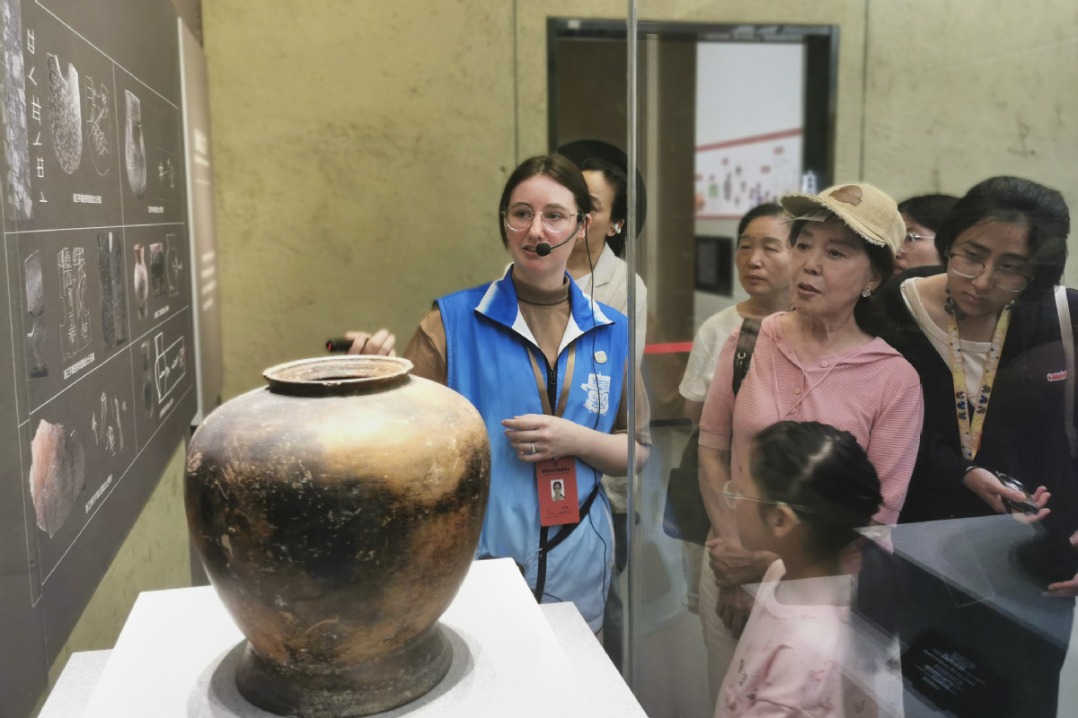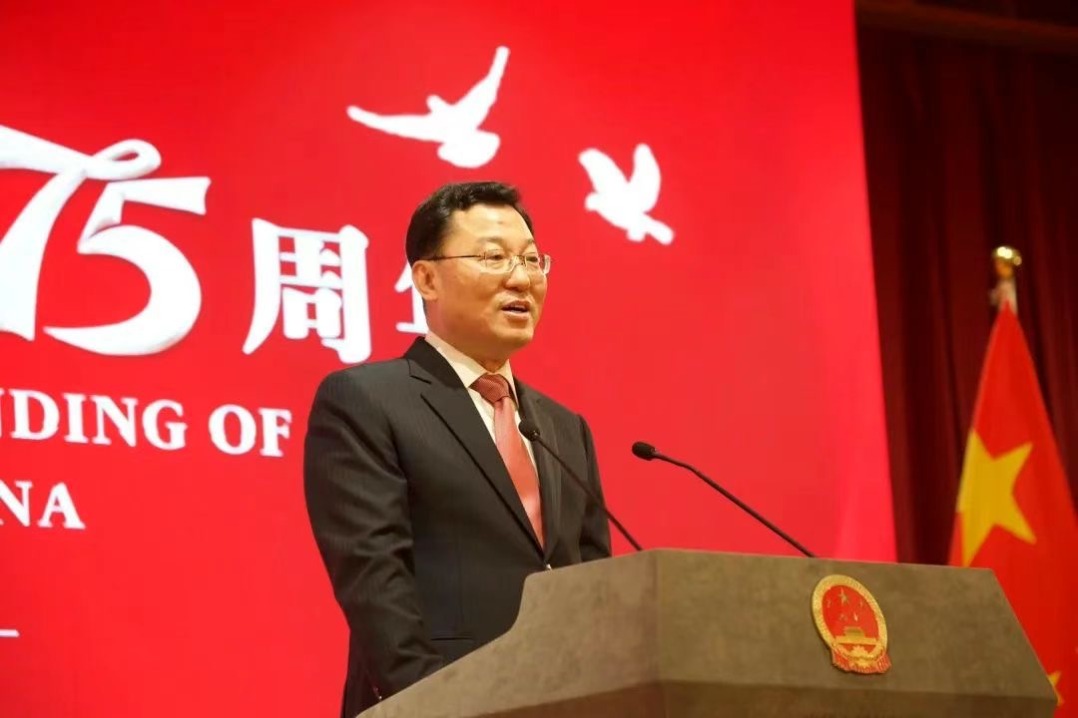A glimpse into China's 75 years of innovation through intellectual property endeavors
Xinhua | Updated: 2024-10-04 15:50

BEIJING -- The evolution of intellectual property (IP) in China provides valuable insights into the country's 75-year journey of innovation.
Since the establishment of the People's Republic of China in 1949, IP initiatives have been vital in protecting individual inventions, fostering enterprise competitiveness, and driving scientific advancement and economic growth.
RECOGNITION OF KNOWLEDGE
Thirty-nine years ago, when Hu Guohua applied for an invention patent, he had to queue overnight outside a national office of patents. The following day, April 1, 1985, marked the enactment of China's Patent Law, leading to over 3,400 applications from both domestic and international sources, setting a daily record in patent history at that time.
Eight months later, Hu received a patent certificate for his invention, a color display device to help analyze satellite images. Newspapers splashed photos of the spectacled aerospace engineer, who became China's first patent rights holder.
The inventor, now 83, continues his relentless pursuit of innovation. According to a report in China Intellectual Property News, last week an astronomical observatory installed a patented solar simulator luminescent device he invented.
"The patent system has recognized the value of knowledge, thereby stimulating innovation," Hu said.
In the 1960s, most Chinese people were unaware of IP. Through recommendation letters, sci-tech researchers could gain access to each other's inventions. While such practices helped popularize technologies, they failed to protect individual work and ideas adequately, ultimately hindering long-term innovation, Hu noted.
Since the 1980s, China has implemented a series of laws relating to intellectual property, including Trademark Law, Patent Law and Copyright Law. These laws have undergone constant revisions based on practical experience to ensure stronger legislative protection. Particularly noteworthy is the newly enacted Civil Code, which has established a punitive damage system for infringement that is considered to be of high standard internationally.
The central government has also put IP protection high on its agenda, carrying out a series of measures to enhance efficiency and combat improper behavior.
Hu's first patent certificate is now part of the National Museum of China's collection since the patent has expired. Today, patent certificates are far more common in China.
By the end of 2023, China became the first country in the world with more than 4 million valid invention patents.
From only 98 patent applications filed through the World Intellectual Property Organization (WIPO) in 1994 to 59,000 in 2019, China also rose as the leading global source of international patent applications and has stayed at the top ever since.
PROTECTION FOR ENTERPRISES
Enterprises are the main contributors to China's position as the world's largest patent filer. While cost-effectiveness was once their primary competitive advantage for market penetration, the growing trend of international expansion has prompted a shift toward IP competitiveness. They now acknowledge that prioritizing innovation is essential for achieving sustainable development.
Goodbaby serves as a prime example. In 2014, the Chinese child products company filed a design patent application for a stroller that revolutionized the industry. The product, made from lightweight aerospace-grade aluminum alloy, weighs only 4.6 kilograms and has been acclaimed as the "pocket stroller" since its launch as it can fit easily into a backpack. In the same year, the company entered the global market through international mergers and acquisitions.
However, the product faced intense patent infringement upon entering the market. The company successfully defended its rights and won lawsuits at home and abroad. Currently, the core patents for this China-designed stroller have been authorized in over 30 countries.
"Having our own brand gives us control over development destiny, and strong IP protection ensures a solid guarantee," said the company's IP officer Tu Zuhong.
Nihat Deniz Bayramoglu, at Bayramoglu Law Offices LLC based in Las Vegas, the United States, has been providing IP consultation services in China since the 2010s. The company helps Chinese clients file around 3,000 patent and trademark applications each year. He found that Chinese enterprises are increasingly recognizing the importance of IP protection.
"In the past, only large Chinese multinationals were interested in applying for IP rights abroad, and now much smaller Chinese companies are also trying to protect IP rights," the attorney told Xinhua at the 13th China Intellectual Property Annual Conference held in Beijing in September.
"In the past, many of the Chinese companies I represented were only defendants in court cases, and now many of my Chinese clients are plaintiffs in the United States suing American companies for patent infringement," he said.
He added that the perception in the United States during the 1980s and 1990s that China was involved in producing counterfeit products and did not respect IP rights will gradually be replaced by the reality that "Chinese companies are now at the forefront of cutting-edge technological innovation."
As China accelerates its global expansion, the world has increasingly engaged with the Chinese market.
China is committed to providing equal IP protection for both domestic and foreign enterprises. More than 5,000 foreign and joint venture companies have been registered in the country's state-level IP protection centers, and over the past decade, China's IP regulators have resolved several IP disputes involving companies from countries like the United States, Germany and France.
According to the China National Intellectual Property Administration, by the end of June, the number of valid foreign invention patents and registered trademarks in China showed year-on-year increases of 3.9 percent and 3.8 percent, respectively, demonstrating the strong commitment of foreign enterprises to the Chinese market and their confidence in China's IP protection work.
CONTRIBUTION TO MODERNIZATION
According to the WIPO's Global Innovation Index 2024, which serves as a critical benchmark for global innovation trends, China has climbed to 11th place in the ranking of the world's most innovative economies.
The WIPO director general, Daren Tang, attributed China's progress to its focus on research and development and scientific innovation.
China's IP now extends to almost every field of cutting-edge innovation, from supercomputers to artificial intelligence. An exemplary achievement in this regard is China's role in the International Thermonuclear Experimental Reactor (ITER), a large scientific project that aims to replicate the sun's fusion process to produce clean energy. In April 2021, ITER reached a milestone with the installation of its first large superconducting coil.
At the heart of this technological breakthrough lies a Chinese patent invention about the manufacturing of superconducting magnets for nuclear fusion. Song Yuntao, one of the patent holders and the director-general of the Institute of Plasma Physics, Chinese Academy of Sciences, said that the patent "demonstrates the contribution of Chinese wisdom to advancing humanity's quest for fusion energy."
IP has not only boosted sci-tech advancements but also propelled economic growth.
With an average annual growth rate of 12.4 percent since 2021, the added value of China's patent-intensive industries reached 15.32 trillion yuan (about $2.19 trillion) in 2022, contributing 12.7 percent to the GDP of the world's second-largest economy.
In the digital economy sector, in particular, 406,000 invention patents were authorized in core industries last year, representing 45 percent of the country's total. Over the past five years, this sector has seen an average annual growth rate of 21 percent.
Starting from humble beginnings, China has emerged as the world's largest patent filer and is advancing toward becoming an IP powerhouse. The government has pledged to continue leveraging intellectual property to boost innovation and support Chinese modernization.
























